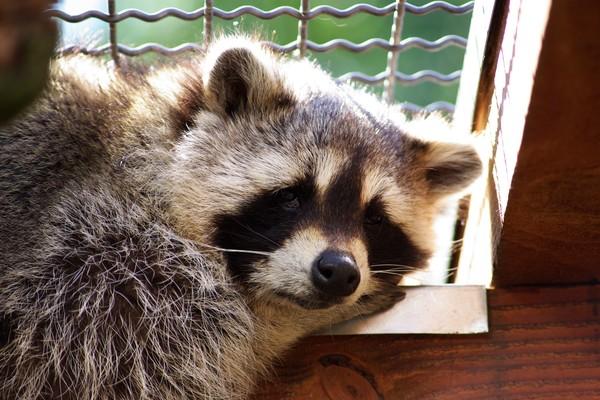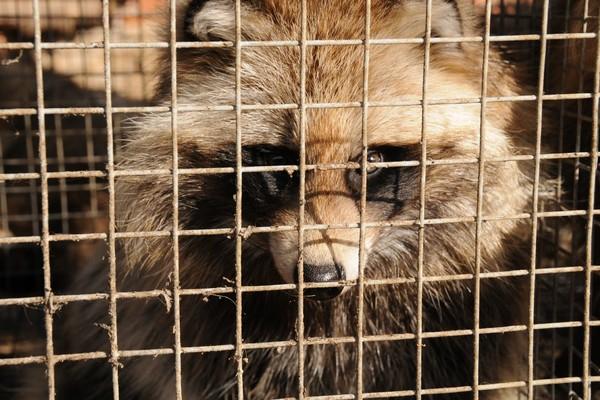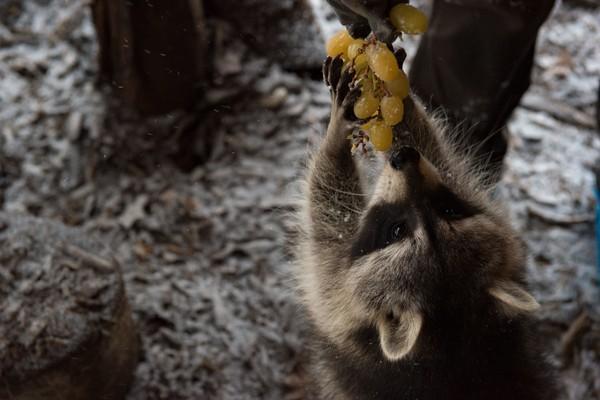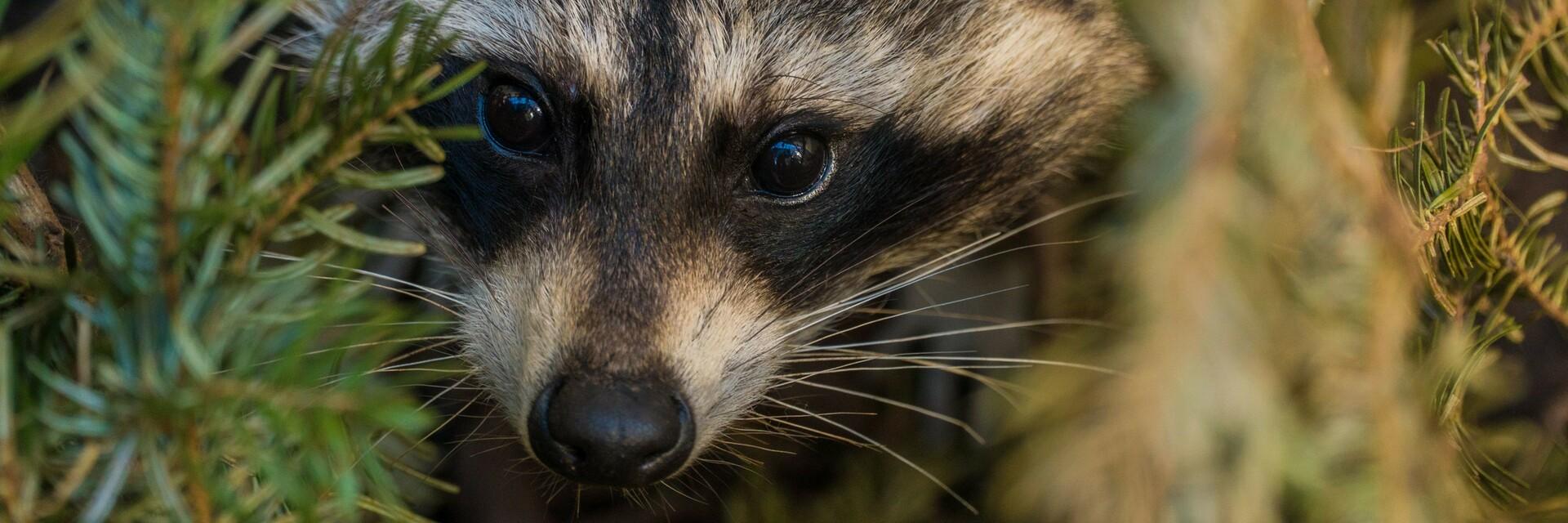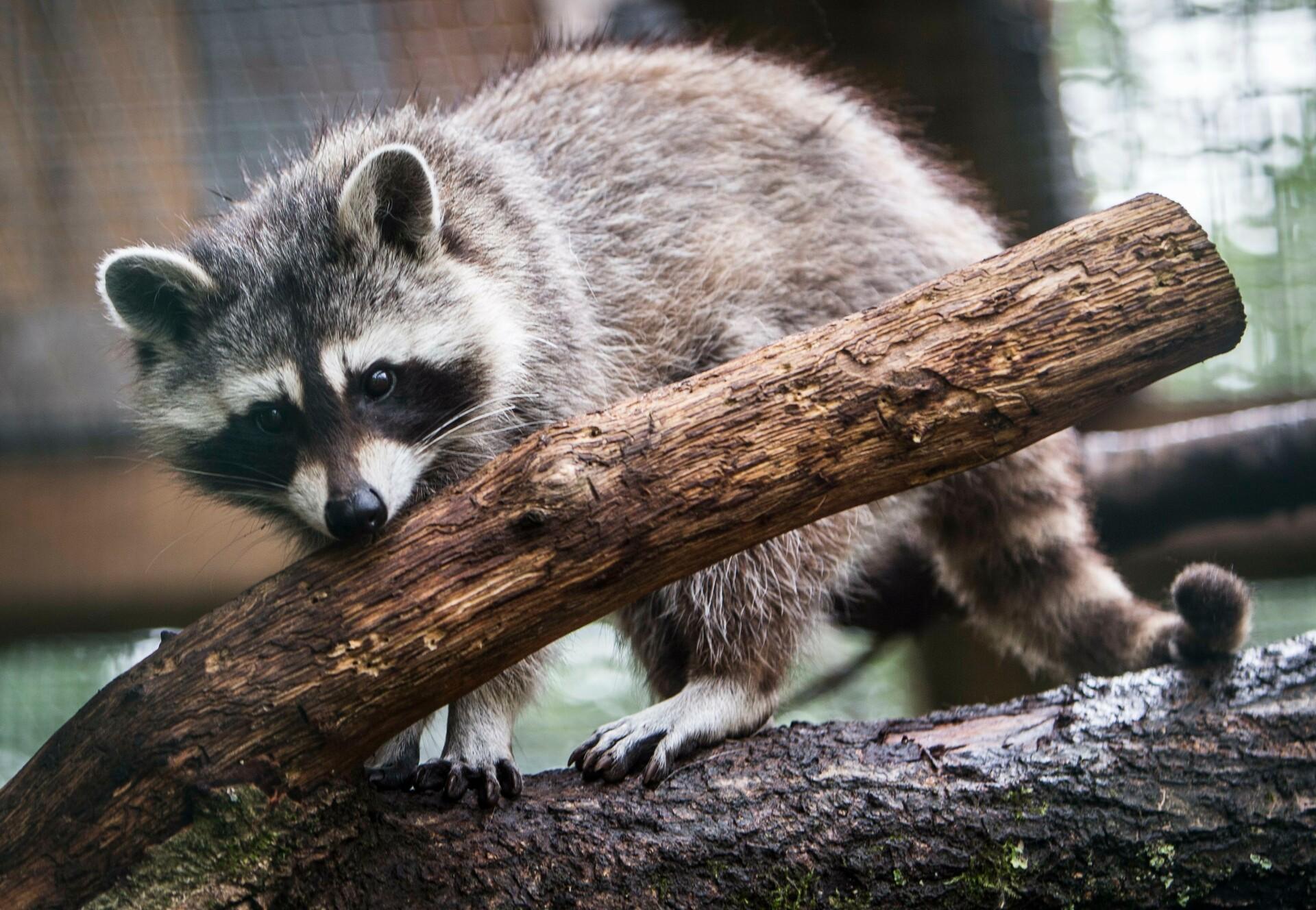
About Raccoons – Also Called "Procyon Lotor"
Brown bear and raccoon are not closely related
Raccoons and bears belong to the same clade of carnivorous mammals, but they are not 'small bears'! Their physique is similar to that of a bear and they are both predators, but the similarity is only due to their adaptation to a comparable way of life.
The raccoon's dense, water-repellent coat is usually dark grey, but there are also brownish, beige or black color variations. However, it always shows the distinctive black facial coloring, which is reminiscent of an eye mask. With a body length of 40-70 cm and a shoulder height of up to 35 cm, an adult raccoon usually weighs between 5 and 10 kg. The bushy tail with the typical stripe pattern grows to about 25 cm long.
Raccoons have an excellent sense of touch. Its front paws with five very flexible fingers are extremely sensitive. With the help of additional long tactile hairs (vibrissae) above the claws, objects can be recognized even before the raccoon touches them. Visual perception plays only a subordinate role for the raccoon, and it is not extremely well developed. Hearing, on the other hand, is very good, so that even sounds of insects or worms under the ground can be perceived. The sense of smell plays an important role in communication among conspecifics. Glandular secretions, urine and faeces are used as scent marks.
Scientific classification
| Order | Carnivora |
| Family | Procynoidae |
| Genus | Procyon |
| Species | Procyon lotor |
| Binominal name | Procyon lotor (Linnaeus, 1758) |
Within the order of Carnivores he raccoon is placed in its own genus Procyon, which can be translated as either "before the dog" or "doglike". Other families within the Carnivores include dogs, bears, skunks and martens, for example.
Did you know…?
What does a raccoon's way of life look like?
The preferred habitat of the raccoon is deciduous and mixed forests. When danger threatens, it climbs trees in a flash and also sets up its litter burrows for the young there. Raccoons are good swimmers and seek proximity to water, where they find the main part of their animal food. The crepuscular and nocturnal animals spend the main part of the day sleeping in tree hollows.
The raccoon is an omnivore and very adaptable. Its main diet consists of invertebrates (insects, snails, beetles, earthworms, etc.), especially in spring. In autumn, the animals eat more calorie-rich plant food (tree fruits, fruit, nuts, etc.) to build up sufficient fat reserves for hibernation. Furthermore, fish, mussels, crabs and frogs are on the menu of the raccoon. Mice and birds are rarely eaten, as the raccoon is more of a gatherer than an active hunter.
Raccoons are not solitary animals, but live in loose associations. Several individuals use common foraging areas, as well as feeding and sleeping sites. During the mating season in February, males court their potential mates at specific gathering places where females ready to conceive congregate. Mating then extends over a period of several days. After a gestation period of about 65 days, the female gives birth to an average of 3-4 blind cubs, which she nurses for a good 3 months. The burrows are often found at heights of between 10 and 25 m. Such burrows are very suitable for the young. Such tree hollows are ideal for the cubs as they protect them from enemies and the weather. After about 3 weeks the young raccoons open their eyes and at the age of about 2 months they leave the burrow with their mother for the first time. Until autumn, the young animals stay with their mother and then slowly go their own ways.

Where do raccoons live?
Raccoons are originally native to North America and have only been common in Europe and Japan since the middle of the 20th century, where they were kept and bred for the fur industry. Some animals escaped from such breeding farms and reproduced in the wild.
How did the raccoon become native to Germany?
In the 1920s, the raccoon was also introduced to Germany. From then on, these animals were bred in fur farms on the one hand, but were also deliberately released into the wild with the aim of settling them in Germany and later hunting them.
In 1934, two raccoon pairs were officially released into the wild at Lake Edersee (North Hesse). Initially, the species was even placed under nature protection to encourage its reproduction and spread. The adaptable omnivores indeed found extremely suitable conditions in our latitudes: a rich food supply, temperate climate, tree-rich vegetation and hardly any natural enemies. Accordingly, the raccoons reproduced much more strongly than had probably been assumed. Most likely, the German raccoon population can be traced back to these two abandoned pairs and a group of more than 20 animals that escaped from a fur farm near Berlin towards the end of the war.
From 1990, after the fall of the Berlin Wall, the western and eastern populations were able to grow together. Nevertheless, the areas in Hesse and Brandenburg remain the main distribution areas of the raccoon within Germany to this day.
Raccoons are considered invasive animals in the EU
Nearly 40 raccoons are permanently cared for at TIERART. The release of these animals into the wild is prohibited in Germany, so raccoons once taken into human care must remain there.
The costs for building new enclosures, food, castration, deworming, other medicines and animal care staff have to be financed through donations.

